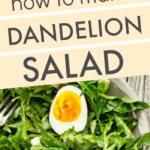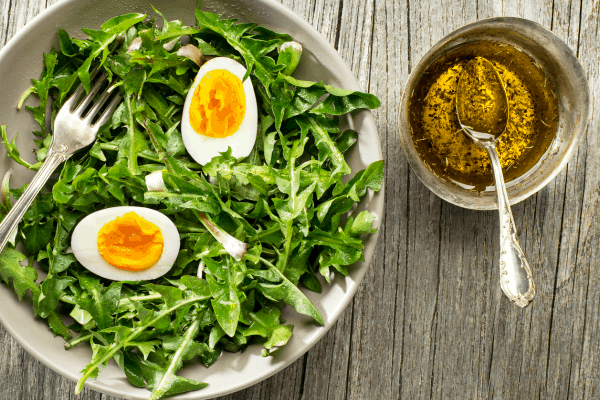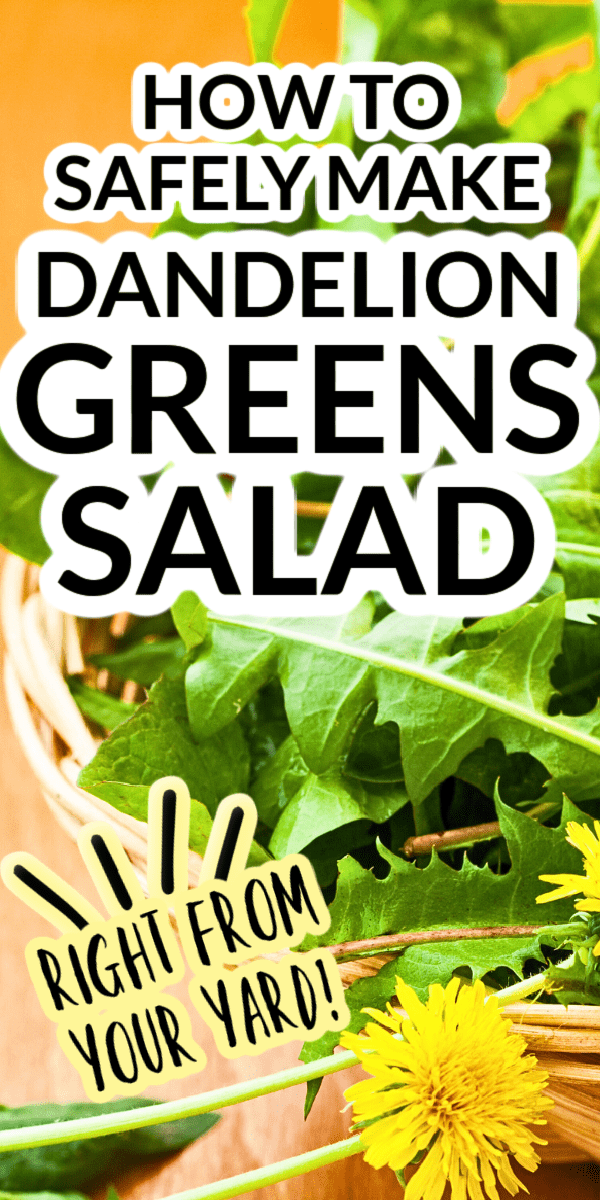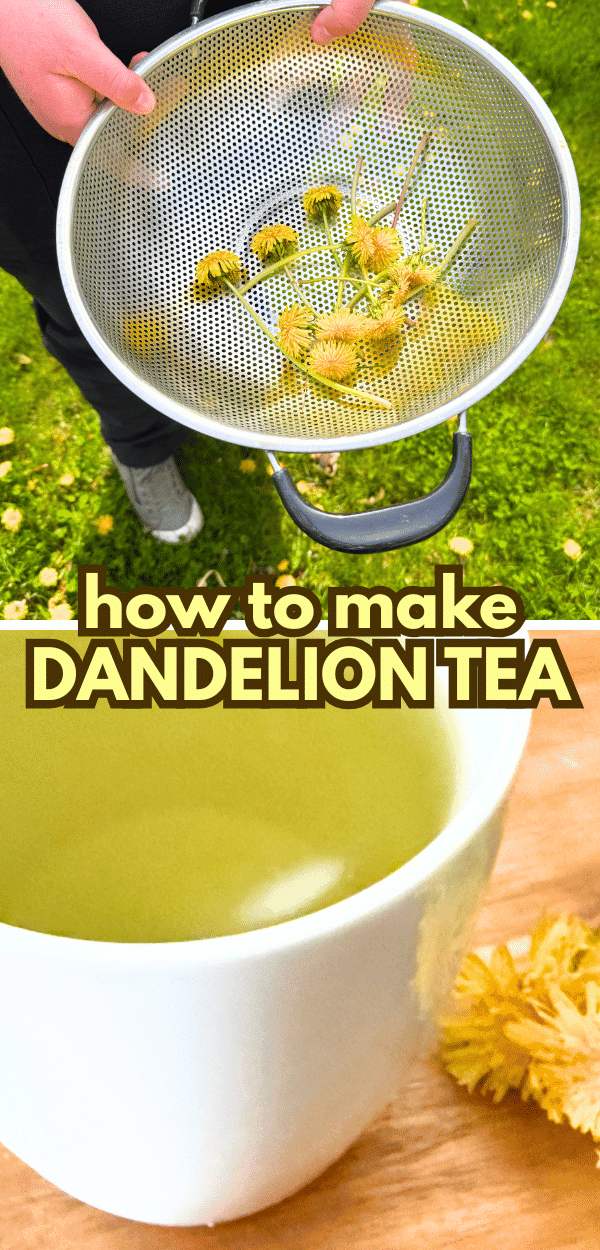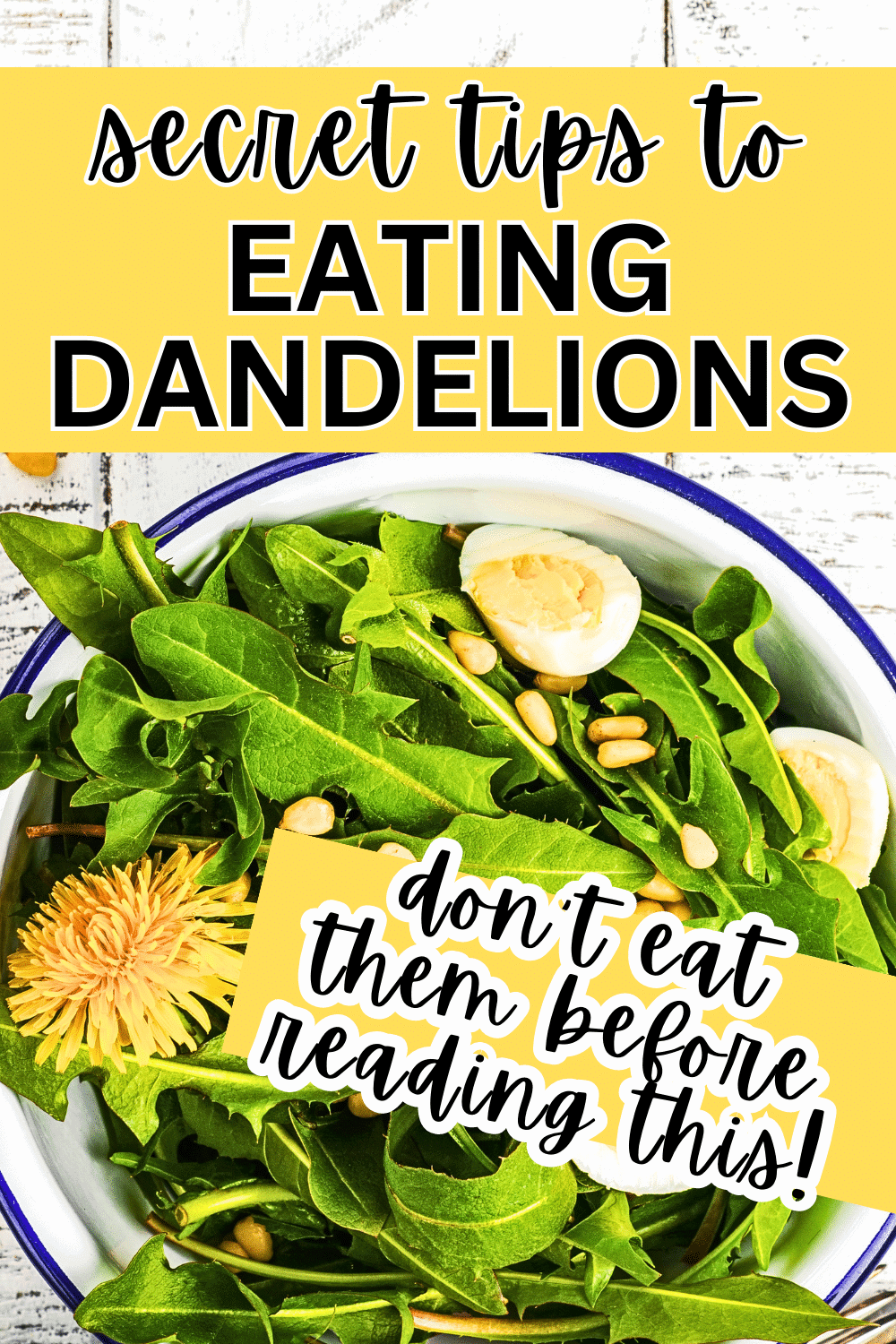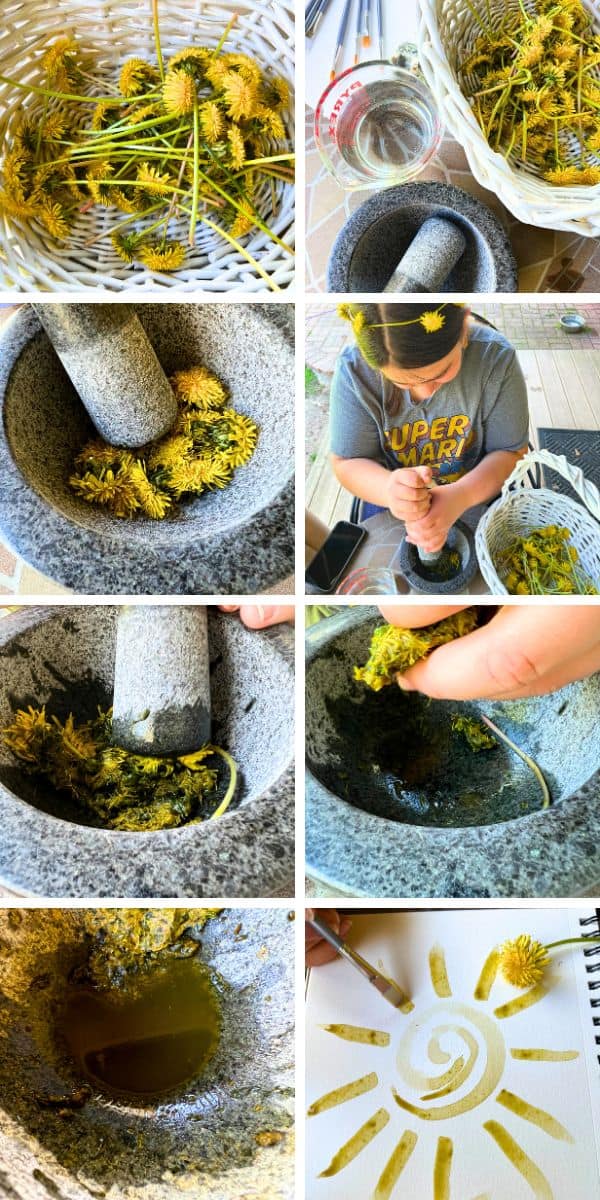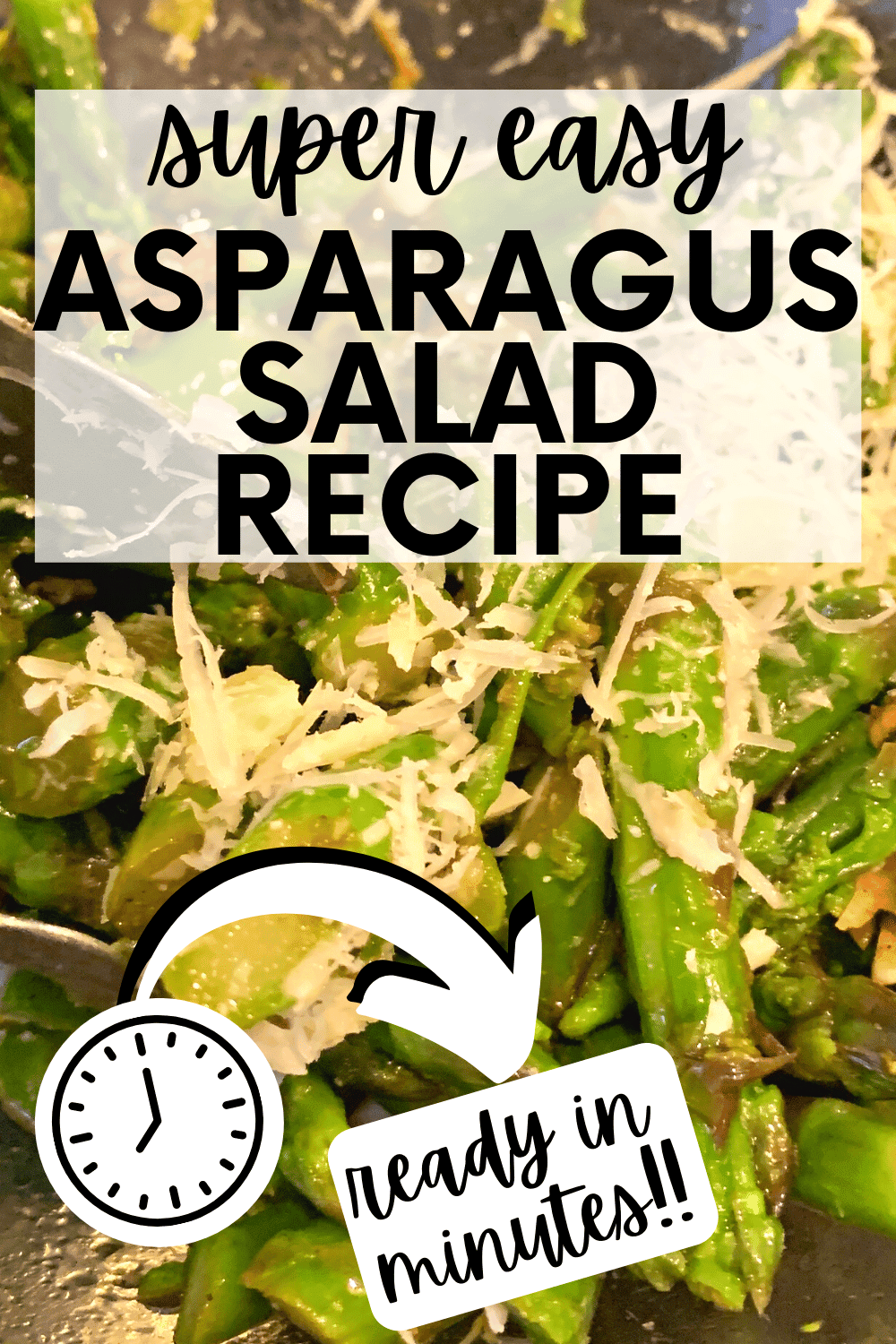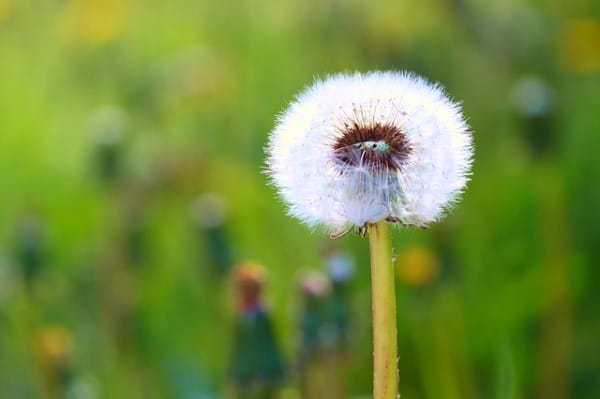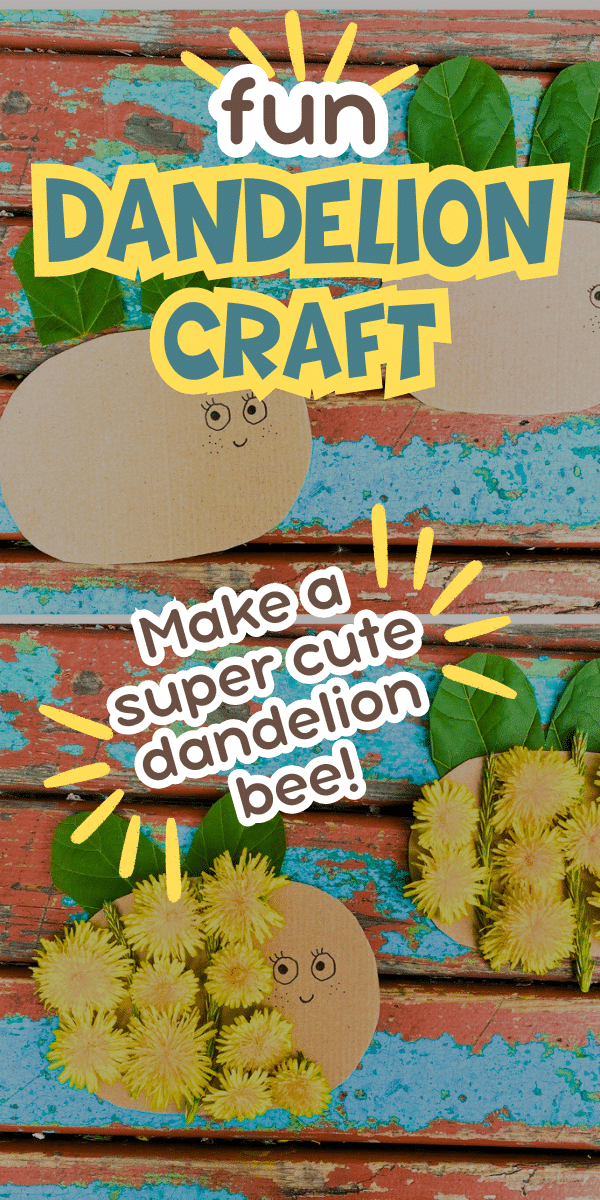This wild dandelion salad will surprise and delight your family and is a great introduction to foraging for food with kids and eating wildflowers. This easy dandelions recipe is refreshing, yummy, and also makes a fun outdoor family activity for spring or early summer edible flowers!
How To Make Dandelion Salad
Dandelions salad is fun recipe to make with kids because most people never consider picking dandelions and then eating them! Fun Fact: Dandelion in salad has been around for a long time! Dandelion flowers and greens were a popular dandelion salad Great Depression salad recipe! You can learn about dandelion salad history with kids!
To Make a Simple Dandelion Salad Recipe:
- Fresh dandelions (dandelion flowers and dandelion greens)
- Canola oil or olive oil
- Fresh squeezed lemon juice
- Green onions
- Oranges (optional)
- Hard boiled eggs
- Salt
- Fresh cracked black pepper
- Shaved parmesan cheese, optional
- Bacon crumbles, optional
- Bread crumbs or croutons, optional
KEEP SCROLLING for the free dandelion flower salad printable recipe card below — a unique and delicious salad and fun fresh recipes to make with kids!
What is dandelion salad?
Dandelion salad is made up of the green leaves (“the greens”) and even the stems and flowers of dandelions.
You can eat the dandelions greens salad (dandelion lettuce) like this with a little salt and oil, or add in any other things that you like in salads like cherry tomatoes, red onions, cheeses and more!
Are dandelion greens good in salad?
Yes! Just like any greens, they have their own unique flavor that they add to salad.
Fresh dandelion greens are more on the bitter or nutty flavor side, so some people enjoy the greens added into a salad of other kinds of greens or lettuces.
The young dandelion leaves (early spring dandelion leaves in salad) are best for salads and make the dandelion leaves salad less bitter.
KEEP SCROLLING for the recipe for dandelion salad!
What does dandelion salad taste like?
Dandelion salad has a slightly bitter and nutty taste.
Some people compare it to endive, baby spinach, or radicchio salad.
It is said that the earlier you pick the dandelion greens (like early spring dandelions), the more mild they will be.
Dandelions get more bitter the longer you wait.
The larger the green, the stronger the taste and they become tougher.
The more mature dandelion leaves are better for cooking instead of eating fresh.
Before we get to how to make dandelion salad, let’s answer some common questions about dandelions and dandelion greens recipes.
How To Eat Dandelion: Recipe FAQs and Recipe Tips
Many people wonder, Is it safe to eat dandelions from your yard or are dandelion greens edible?
Can you eat raw dandelion greens?
Yes! Raw dandelion greens are great in dandelions salad! Plus, they provide vitamins like A, C, and K, and also minerals like iron and calcium.
Just be sure that you eat raw dandelion greens that have not been sprayed with pesticides or other chemical lawn or bug spray.
If you want to eat dandelion greens raw, forage the young spring leaves before the plant starts to flower (if you can).
These are the milder tasting greens.
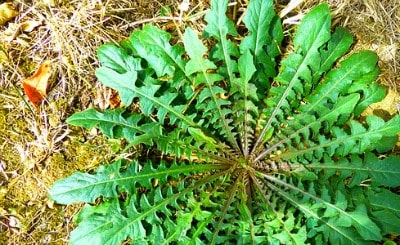
Can you eat the flower of the dandelion?
Yes, you can eat the yellow flower of the dandelion.
They are crunchy and can be eaten raw, like in a salad, cooked, or even breaded and fried.
You can also infuse them into teas (like we did here), wines, or even jams or syrups!
What part of a dandelion can you eat in a salad?
You can eat any part of the dandelion (even the dandelion root and flower buds!), but most people eat the leafy dandelion greens in salads.
Can you eat dandelion greens stems?
Yes, you can eat dandelion greens and stems.
All parts of the dandelion are edible, from the greens (leaves) to the flower and even the stem.
Even the dandelion roots are edible and some people brew them for tea or coffee!
TRY THIS DANDELION CRAFT NEXT: How To Make Dandelion Homemade Paint
How do you prepare dandelion greens to eat?
You should only eat dandelions that have not be treated with pesticides or other lawn care chemicals.
Dandelion greens should be thoroughly washed and dried after picking.
The most common way to eat dandelion greens are raw in salads or to saute or fry them as a fried green.
If you’re wondering how to use dandelion greens and flowers in other ways, there are many dandelion recipes!
Dandelions can also be used to make:
- Fried dandelion greens
- Fried dandelion flowers / fried dandelion flower buds
- Sauteed dandelions or braised dandelions in olive oil (yes! cooking dandelions is also good!)
- Fresh Dandelion salad with a squeeze of lemon juice or lime juice and black pepper and salt (peppery dandelion greens are so good!) — top them with roasted pine nuts (or even use red wine vinegar, balsamic vinegar, or apple cider vinegar. It’s definitely a salad where you can play around with the salad dressing!)
- Warm dandelion salad (also called bitter greens wilted salad)
- Pesto
- Scrambled eggs or a quiche
- Dandelion tea
- Dandelion wine
- Dandelion jelly or jam
- Dandelion syrup
- Dandelion coffee (from the roasted roots)
- Soups
- Decorations for shortbread cookies (press the flowers or petals into the dough)
Any way that you eat regular greens or salad greens you can also probably eat a dandelion green recipe!
If you have any other recipes with dandelions that you love, let us know and we’ll add them to our recipe list!
Dandelion Greens Nutrition Facts
Dandelion greens are a nutrient-dense leafy green vegetable that is low in calories but high in vitamins, minerals, and antioxidants. Dandelions are high in Vitamin C, Vitamin A, Vitamin K, and are also good sources for other daily values of nutrients!
OK! On to our easy salad recipe!
- After this recipe, learn how to bake brownies with flowers you can eat!
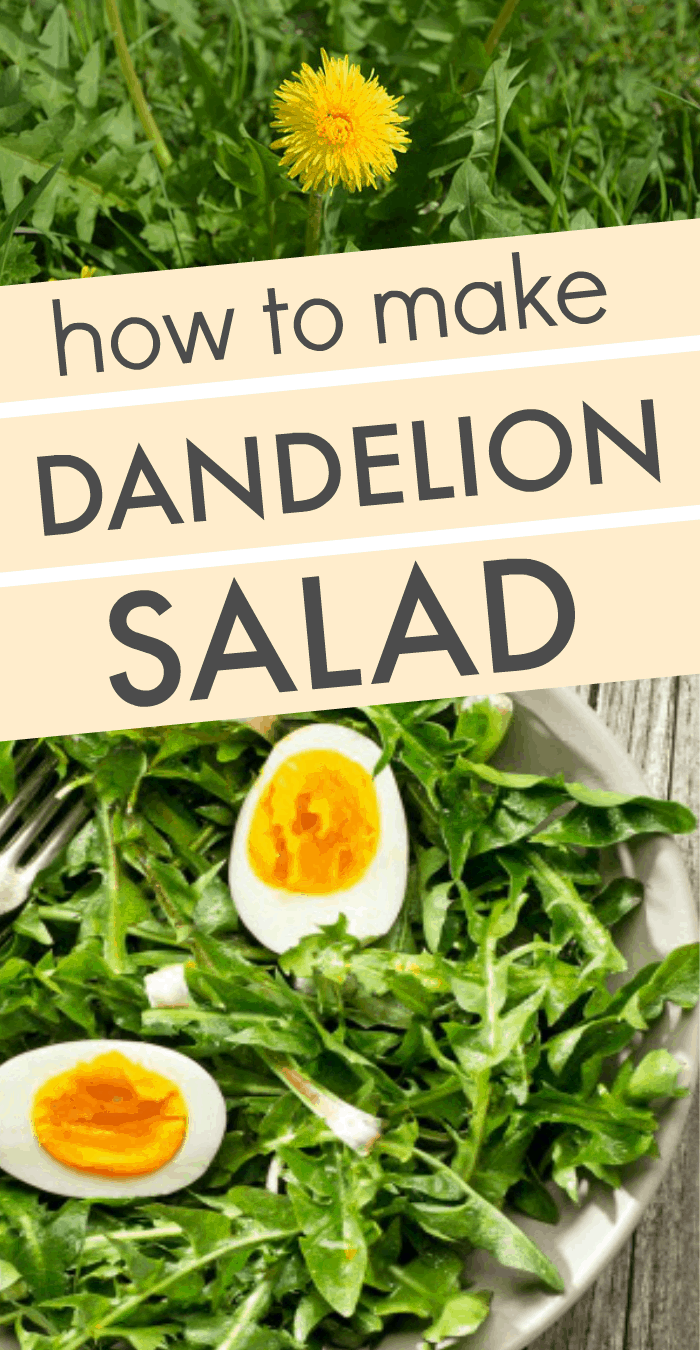
How To Use Dandelion In Salad: Dandelion Salad Recipe
Before making any recipe for dandelion greens (aka: dandelion leaf recipe) or dandelion flowers, you need to prepare dandelions. Here’s how to prepare dandelion greens and flowers…
Dandelion Greens Preparation
Only pick and eat dandelions if you are sure they haven’t been treated with pesticides!
You need to thoroughly wash dandelion greens and flowers of dandelions before using them.
(We like to use a salad spinner and then lay them out on a paper towel to dry.)
Also, we used a more citrus dandelion salad dressing, but you can use also use a vinaigrette dressing, dandelion salad Italian dressing (just use your favorite Italian dressing for Italian dandelion recipes), or a creamy dressing!
You can definitely play around with dandelion green recipes!
AN IMPORTANT NOTE ABOUT COOKING WITH DANDELIONS
If you are going to cook with dandelions, you want to make sure that the yard or field where you pick your dandelions has not been sprayed with weed or bug spray or any other chemical spray.
Don’t eat them from your yard if you spray your yard with chemical sprays!
RECIPE TIP: If you don’t have access to fresh dandelions in your own backyard (or dandelions that haven’t been sprayed), check your local farmer’s markets or even whole foods stores to buy dandelions or buy dandelion salad.
There are many dandelion salad recipes / dandelion veggie salads, but this is our best way to make dandelions salad. You can make just a dandelion leaf salad (like we did) or include the dandelions flowers! You’ll quickly add this to your spring favorite salads!
NOTE: Don’t miss dandelion fun facts and dandelion kids activities after this printable recipe card!
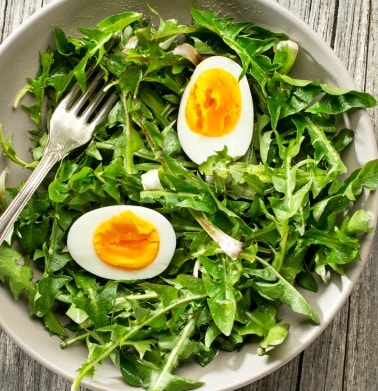
Fresh Dandelion Salad
Ingredients
- 1/4 cup light olive oil
- 2 teaspoons fresh squeezed lemon juice
- 3 cups torn young dandelion greens (leaves) washed and dried
- 2 green onions sliced
- 1 cup oranges peeled and cut into wedges (optional)
- 2 hard boiled eggs sliced (optional)
- Dandelion blossoms washed and dried (optional)
- Salt and pepper to taste
Instructions
- In a small bowl, whisk together oil and lemon juice. Whisk in salt and pepper, to taste. Set aside.
- In a large salad bowl, toss together dandelion greens and onions.
- Drizzle oil and lemon juice over greens and onions. Toss to coat.
- On top of the greens, arrange the eggs (optional), orange slices, and dandelion blossoms. Add salt and pepper, to taste. Serve immediately.
Notes
- We used oranges in our recipe, but any citrus works well. Try it out with grapefruit or tangerines!
- You can also leave out the citrus and instead add any other things you would add to a salad -- arugula, nuts, shaved cheese, fried bacon bits, etc. Don't be afraid to play around with it.
Nutrition
Nutrition Note
Nutrition calculations are approximate. If you're following a special diet, please calculate your own nutrition values.
All About Dandelions For Kids
Learning About Dandelions For Kids
Did you know…
The word dandelion comes from the Middle French word ‘dent de lion’ meaning ‘lion’s tooth’. … The English variation and spelling of the word dandelion dates back to the early 15th century.
[source]
The dandelions scientific name is Taraxacum officinale.
What is another name for dandelion?
- Lentodon taraxacum
- Bitterwort
- Blow-ball
- Cankerwort
- Clock flower
- Common dandelion
- Irish daisy
- Lion’s tooth
- Priest’s crown
- Puffball
- Swine’s snout
- Tell-time
- Yellow gowan
[source]
Are dandelions weeds?
Dandelions are actually perennial herbs and have been used for centuries for food and medicinal purposes. They are only viewed as “weeds” because some people find them annoying to have in their yard and so they classify them as a weed.
Are dandelions poisonous?
No. The dandelions to eat are the same dandelions that grow in your backyard or that you see in the park! There are some people with specific medical conditions or allergies that may have reactions to dandelions. So, like anything, eat them in moderation.
According to the Northern New England Poison Center:
Dandelions are safe to eat in moderation. Eating dandelions regularly or taking supplements that contain dandelion may cause health problems for people with diabetes or people who take certain medications, such as blood thinners, lithium or diuretics.
Dandelions Life Cycle
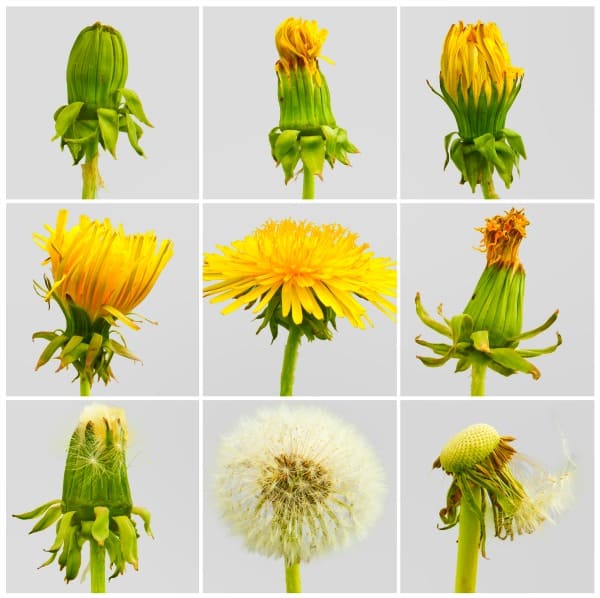
The dandelion life cycle is pretty amazing. In fact, some people may not even realize that those yellow flowers we see growing everywhere are the same dandelions that then turn into those white fuzzy balls!
When the dandelions change to the that furry white seed ball (that’s fun to blow!) after it has flowered, it’s called the “dandelion clock.”
You may have seen those white parts of the dandelions blowing in the wind in the summer! This is the “puffball.”
You have to watch this amazing time-lapse video on the dandelion life cycle!
AFTER THE RECIPES WITH DANDELION GREENS, TRY THIS EASY RECIPE NEXT: CUT ASPARAGUS SALAD
Dandelions Wish
It is said if you can blow all of the dandelion clock in one breath, then your wish will come true (or a true love will come back to you!).
Fun Facts About Dandelions
- Dandelions are natural diuretics, which means they can make you pee A LOT! Because of this, dandelions are sometimes call “pee-a-bed.”
- Dandelion stems are filled with a milky juice. Even though they are safe to eat, the stems sometimes give some people heartburn or diarrhea. (YUCK!)
- The milky white “sap” from the dandelion stem can be used to treat rough skin like calluses, corns, or warts. They are sometimes called “Milk Witch” because of that milky white substance.
- Dandelions are sometimes called “Clockflower” or “Tell-Time” because folklore says the number of breaths it takes to blow all the white puff seeds off is the time of day. For example, if it takes three breaths, it is 3 o’clock.
MORE DANDELION ACTIVITIES: MAKE A DANDELION BEE!
RECIPE AND READ: Children’s Book Recommendations
Any of the following books would pair well with this dandelion greens salad recipe — and learning about dandelions would make a great study unit and then make the dandelion greens recipe or other recipes for dandelions to go with the lessons!
Children’s Books on Dandelions
- Why Dandelions Grow
- From Seed To Dandelion
- Dandelion children’s book
- I Wish You More
- The Dandelion Seed picture book
- Dandelions children’s book
Learning More About Foraging for Food And Wild Plants
After you made our salad green dandelion recipe, try learning more about how to forage for other things!
We hope you enjoy the dandelion salad recipe!

